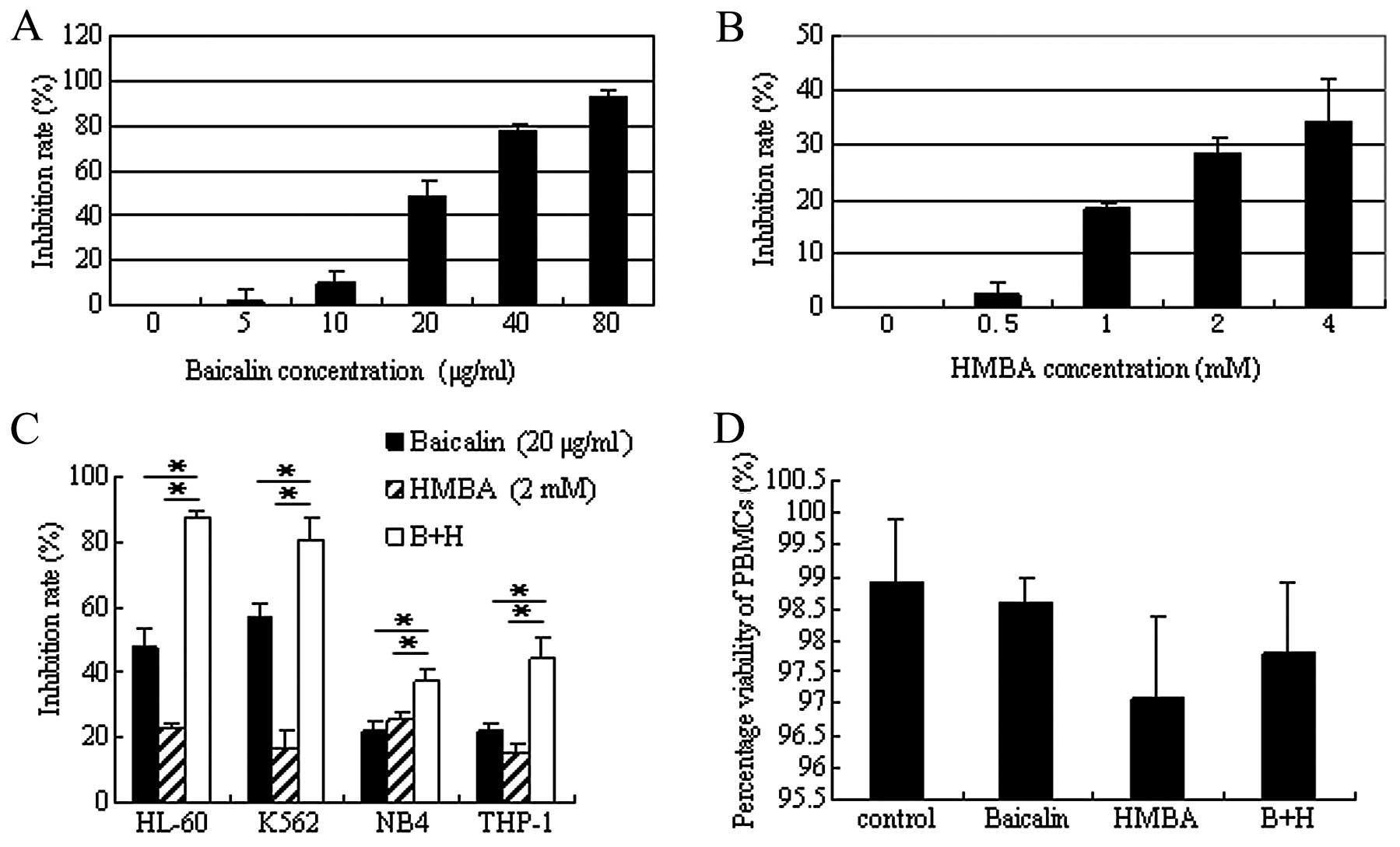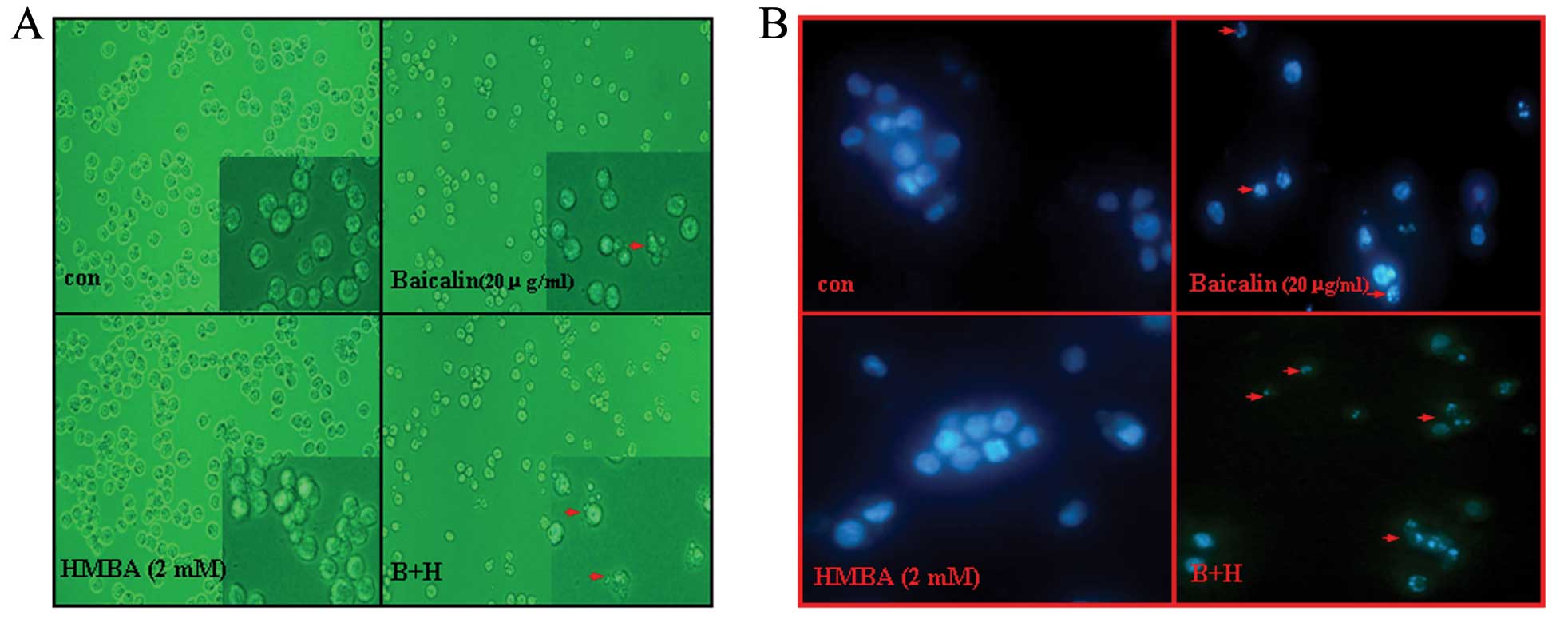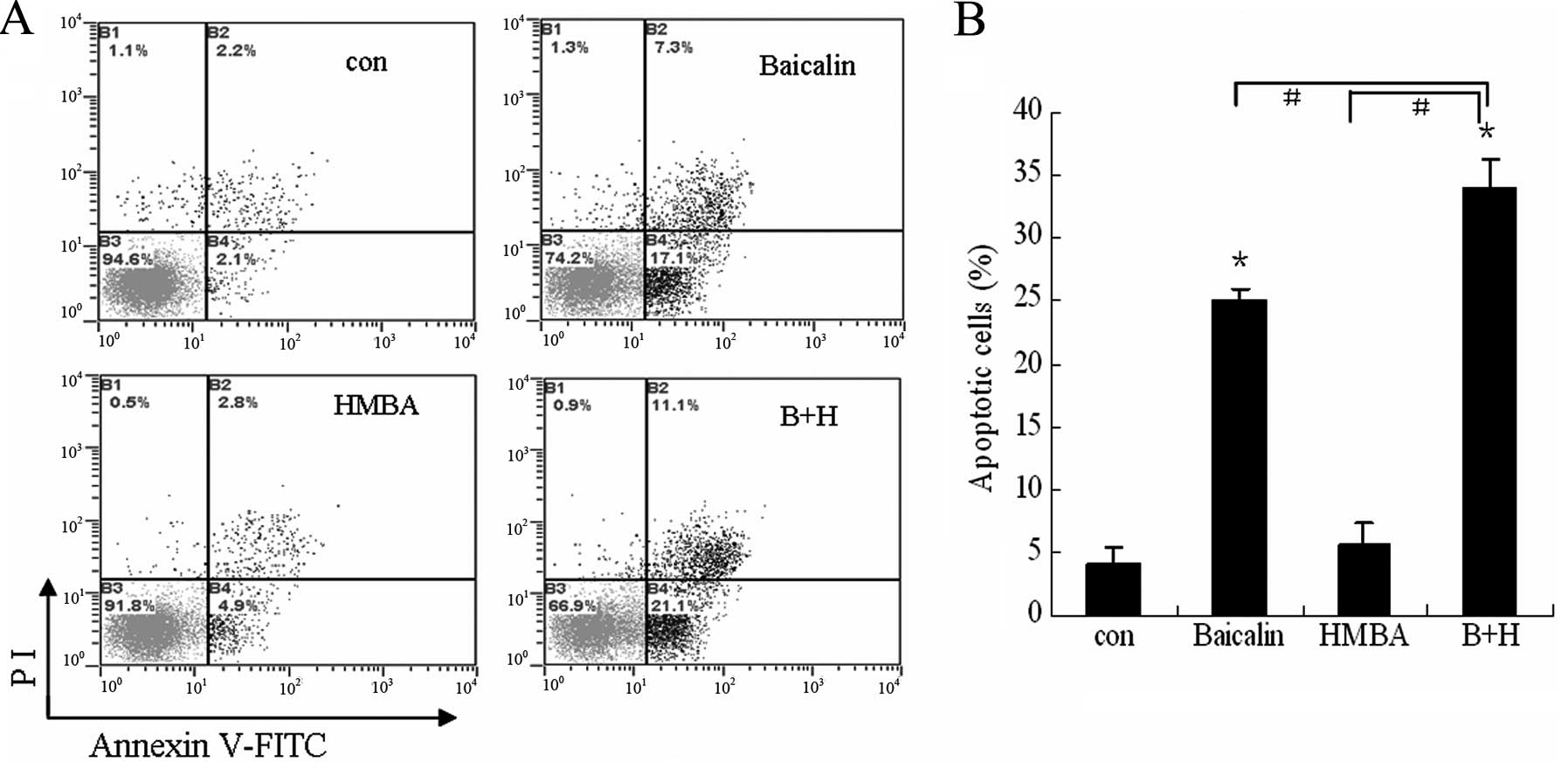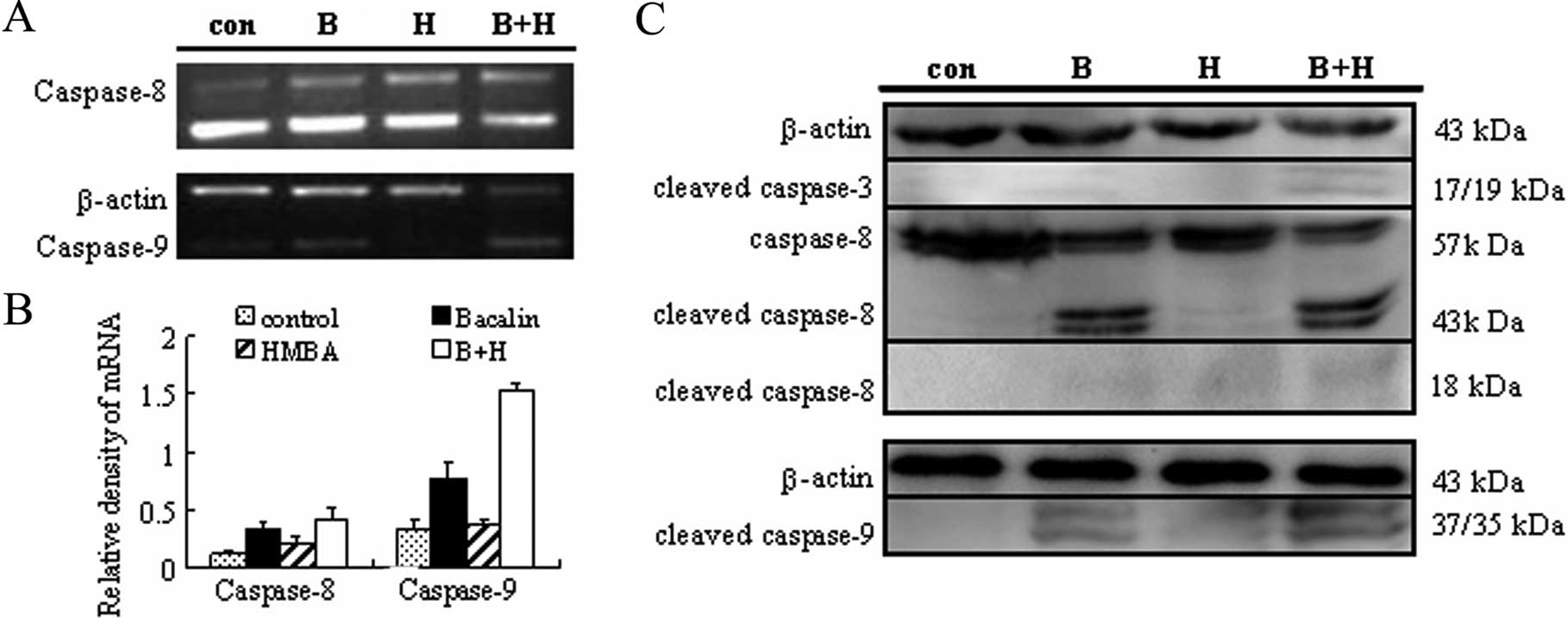|
1
|
Smith M, Barnett M, Bassan R, Gatta G,
Tondini C and Kern W: Adult acute myeloid leukaemia. Crit Rev Oncol
Hematol. 50:197–222. 2004. View Article : Google Scholar
|
|
2
|
Kumar CC: Genetic abnormalities and
challenges in the treatment of acute myeloid leukemia. Genes
Cancer. 2:95–107. 2011. View Article : Google Scholar : PubMed/NCBI
|
|
3
|
Tallman MS, Gilliland DG and Rowe JM: Drug
therapy for acute myeloid leukemia. Blood. 106:1154–1163. 2005.
View Article : Google Scholar : PubMed/NCBI
|
|
4
|
Estey E and Döhner H: Acute myeloid
leukaemia. Lancet. 368:1894–1907. 2006. View Article : Google Scholar
|
|
5
|
Kantarjian H, O’brien S, Cortes J, et al:
Results of intensive chemotherapy in 998 patients age 65 years or
older with acute myeloid leukemia or high-risk myelodysplastic
syndrome: predictive prognostic models for outcome. Cancer.
106:1090–1098. 2006.
|
|
6
|
Luo CY, Tang JY and Wang YP:
Homoharringtonine: a new treatment option for myeloid leukemia.
Hematology. 9:259–270. 2004. View Article : Google Scholar : PubMed/NCBI
|
|
7
|
Shen ZX, Chen GQ, Ni JH, et al: Use of
arsenic trioxide (As2O3) in the treatment of acute promyelocytic
leukemia (APL): II. Clinical efficacy and pharmacokinetics in
relapsed patients. Blood. 89:3354–3360. 1997.PubMed/NCBI
|
|
8
|
Lichtman SM, Hollis D, Miller AA, et al:
Prospective evaluation of the relationship of patient age and
paclitaxel clinical pharmacology: Cancer and Leukemia Group B
(CALGB 9762). J Clin Oncol. 24:1846–1851. 2006. View Article : Google Scholar : PubMed/NCBI
|
|
9
|
Zhou GB, Zhang J, Wang ZY, Chen SJ and
Chen Z: Treatment of acute promyelocytic leukaemia with all-trans
retinoic acid and arsenic trioxide: a paradigm of synergistic
molecular targeting therapy. Philos Trans R Soc Lond B Biol Sci.
362:959–971. 2007. View Article : Google Scholar : PubMed/NCBI
|
|
10
|
Shen ZX, Shi ZZ, Fang J, et al: All-trans
retinoic acid As2O3 combination yields a high quality remission and
survival in newly diagnosed acute promyelocytic leukemia. Proc Natl
Acad Sci USA. 101:5328–5335. 2004. View Article : Google Scholar : PubMed/NCBI
|
|
11
|
Zhao Y, Cui Z and Zhang L: Effects of
icariin on the differentiation of HL-60 cells. Zhonghua Zhong Liu
Za Zhi. 19:53–55. 1997.(In Chinese).
|
|
12
|
Ren X, Li CL, Wang HX, Wen PE, Yuan CJ, Li
YM and Jiang GS: Molecular mechanism of HL-60 cells apoptosis
induced by baicalin. Zhongguo Shi Yan Xue Ye Xue Za Zhi.
20:847–851. 2012.(In Chinese).
|
|
13
|
Huang WH, Lee AR and Yang CH:
Antioxidative and anti-inflammatory activities of polyhydroxy
flavonoids of Scutellaria baicalensis GEORGI. Biosci
Biotechnol Biochem. 70:2371–2380. 2006. View Article : Google Scholar : PubMed/NCBI
|
|
14
|
Shang X, He X, Li M, Zhang R, Fan P, Zhang
Q and Jia Z: The genus Scutellaria an ethnopharmacological
and phytochemical review. J Ethnopharmacol. 128:279–313.
2010.PubMed/NCBI
|
|
15
|
Lu HF, Hsueh SC, Ho YT, et al: ROS
mediates baicalin-induced apoptosis in human promyelocytic leukemia
HL-60 cells through the expression of the Gadd153 and
mitochondrial-depedent pathway. Anticancer Res. 27:117–125.
2007.PubMed/NCBI
|
|
16
|
Shieh DE, Cheng HY, Yen MH, Chiang LC and
Lin CC: Baicalin-induced apoptosis is mediated by Bcl-2-dependent,
but not p53-dependent, pathway in human leukemia cell lines. Am J
Chin Med. 34:245–261. 2006. View Article : Google Scholar : PubMed/NCBI
|
|
17
|
Parajuli P, Joshee N, Rimando AM, Mittal S
and Yadav AK: In vitro antitumor mechanisms of various
Scutellaria extracts and constituent flavonoids. Planta Med.
75:41–48. 2009. View Article : Google Scholar : PubMed/NCBI
|
|
18
|
Ueda S, Nakamura H, Masutani H, Sasada T,
Takabayashi A, Yamaoka Y and Yodoi J: Baicalin induces apoptosis
via mitochondrial pathway as prooxidant. Mol Immunol. 38:781–791.
2002. View Article : Google Scholar : PubMed/NCBI
|
|
19
|
Andreeff M, Stone R, Michaeli J, et al:
Hexamethylene bisacetamide in myelodysplastic syndrome and acute
myelo-genous leukemia: a phase II clinical trial with a
differentiation-inducing agent. Blood. 80:2604–2609. 1992.
|
|
20
|
Ren X, Wen PE, Yang WH, et al: Molecular
mechanism underlying differentiation of HL-60 cells induced by
hexamethylene bisacetamide. Zhongguo Shi Yan Xue Ye Xue Za Zhi.
16:1030–1034. 2008.(In Chinese).
|
|
21
|
Marks PA, Richon VM, Kiyokawa H and
Rifkind RA: Inducing differentiation of transformed cells with
hybrid polar compounds: a cell cycle-dependent process. Proc Natl
Acad Sci USA. 91:10251–10254. 1994. View Article : Google Scholar : PubMed/NCBI
|
|
22
|
Cecchinato V, Erba E, Basile A, et al:
Hexamethylene bisacetamide inhibits malignant phenotype in T-ALL
cell lines. Leuk Res. 32:791–797. 2008. View Article : Google Scholar : PubMed/NCBI
|
|
23
|
Ruefli AA, Smyth MJ and Johnstone RW: HMBA
induces activation of a caspase-independent cell death pathway to
overcome P-glycoprotein-mediated multidrug resistance. Blood.
95:2378–2385. 2000.PubMed/NCBI
|
|
24
|
Palumbo C, Albonici L, Bei R, Bocci C,
Scarpa S, Di Nardo P and Modesti A: HMBA induces cell death and
potentiates doxorubicin toxicity in malignant mesothelioma cells.
Cancer Chemother Pharmacol. 54:398–406. 2004. View Article : Google Scholar : PubMed/NCBI
|
|
25
|
Waxman S, Scher BM, Hellinger N and Scher
W: Combination cytotoxic-differentiation therapy of mouse
erythroleukemia cells with 5-fluorouracil and hexamethylene
bisacetamide. Cancer Res. 50:3878–3887. 1990.
|
|
26
|
Almenara J, Rosato R and Grant S:
Synergistic induction of mitochondrial damage and apoptosis in
human leukemia cells by flavopiridol and the histone deacetylase
inhibitor suberoylanilide hydroxamic acid (SAHA). Leukemia.
16:1331–1343. 2002. View Article : Google Scholar
|
|
27
|
Dasmahapatra G, Almenara J and Grant S:
Flavopiridol and histone deacetylase inhibitors promote
mitochondrial injury and cell death in human leukemia cells that
overexpress Bcl-2. Mol Pharmacol. 69:288–298. 2006.PubMed/NCBI
|
|
28
|
Liu J, Bi G, Wen P, et al: Down-regulation
of CD44 contributes to the differentiation of HL-60 cells induced
by ATRA or HMBA. Cell Mol Immunol. 4:59–63. 2007.PubMed/NCBI
|
|
29
|
Smith KM, Ketchart W, Zhou X, Montano MM
and Xu Y: Determination of hexamethylene bisacetamide, an
antineoplastic compound in mouse and human plasma by LC-MS/MS. J
Chromatogr B Analyt Technol Biomed Life Sci. 879:2206–2212. 2011.
View Article : Google Scholar : PubMed/NCBI
|
|
30
|
Conley BA, Egorin MJ, Sinibaldi V, et al:
Approaches to optimal dosing of hexamethylene bisacetamide. Cancer
Chemother Pharmacol. 31:37–45. 1992. View Article : Google Scholar : PubMed/NCBI
|
|
31
|
Ghavami S, Hashemi M, Ande SR, et al:
Apoptosis and cancer: mutations within caspase genes. J Med Genet.
46:497–510. 2009. View Article : Google Scholar : PubMed/NCBI
|
|
32
|
Zimmermann KC, Bonzon C and Green DR: The
machinery of programmed cell death. Pharmacol Ther. 92:57–70. 2001.
View Article : Google Scholar : PubMed/NCBI
|
|
33
|
Ikezoe T, Chen SS, Heber D, Taguchi H and
Koeffler HP: Baicalin is a major component of PC-SPES which
inhibits the proliferation of human cancer cells via apoptosis and
cell cycle arrest. Prostate. 49:285–292. 2001. View Article : Google Scholar : PubMed/NCBI
|
|
34
|
Steinman RA: Cell cycle regulators and
hematopoiesis. Oncogene. 21:3403–3413. 2002. View Article : Google Scholar : PubMed/NCBI
|
|
35
|
Buonamici S and Aifantis I: Hexamethylene
bisacetamide as a treatment for T-cell leukemia (T-ALL). Leuk Res.
32:689–690. 2008. View Article : Google Scholar : PubMed/NCBI
|
|
36
|
Riedl SJ and Shi Y: Molecular mechanisms
of caspase regulation during apoptosis. Nat Rev Mol Cell Biol.
5:897–907. 2004. View Article : Google Scholar : PubMed/NCBI
|
|
37
|
Fulda S: Caspase-8 in cancer biology and
therapy. Cancer Lett. 281:128–133. 2009. View Article : Google Scholar : PubMed/NCBI
|
|
38
|
Huang Y, Hu J, Zheng J, Li J, Wei T, Zheng
Z and Chen Y: Down-regulation of the PI3K/Akt signaling pathway and
induction of apoptosis in CA46 Burkitt lymphoma cells by baicalin.
J Exp Clin Cancer Res. 31:482012. View Article : Google Scholar : PubMed/NCBI
|
|
39
|
Autret A and Martin SJ: Bcl-2 family
proteins and mitochondrial fission/fusion dynamics. Cell Mol Life
Sci. 67:1599–1606. 2010. View Article : Google Scholar : PubMed/NCBI
|
|
40
|
Reed JC, Jurgensmeier JM and Matsuyama S:
Bcl-2 family proteins and mitochondria. Biochim Biophys Acta.
1366:127–137. 1998. View Article : Google Scholar : PubMed/NCBI
|
















